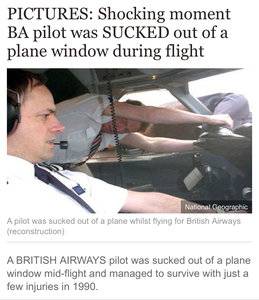- Joined
- Jun 8, 2008
- Messages
- 54,136
ugh I am terrified of planes. I hate this type of stuff.
Me too. I know it is a very rare event and that flying in planes is way safer than driving in cars but still my fear of flying is strong. And I have no real desire to get over it at least for now. It's the lack of control and maybe I have a perceived false sense of control doing other things where we really dont have the control we think we do but I just feel safer driving. Even with all the drivers who have horrible driving skills who are all around us while we are on the road. There is only so much defensive driving can do for one to remain safe if there is a real menace on the road. But still I feel better driving than flying.
That poor woman and her family.






300x240.png)